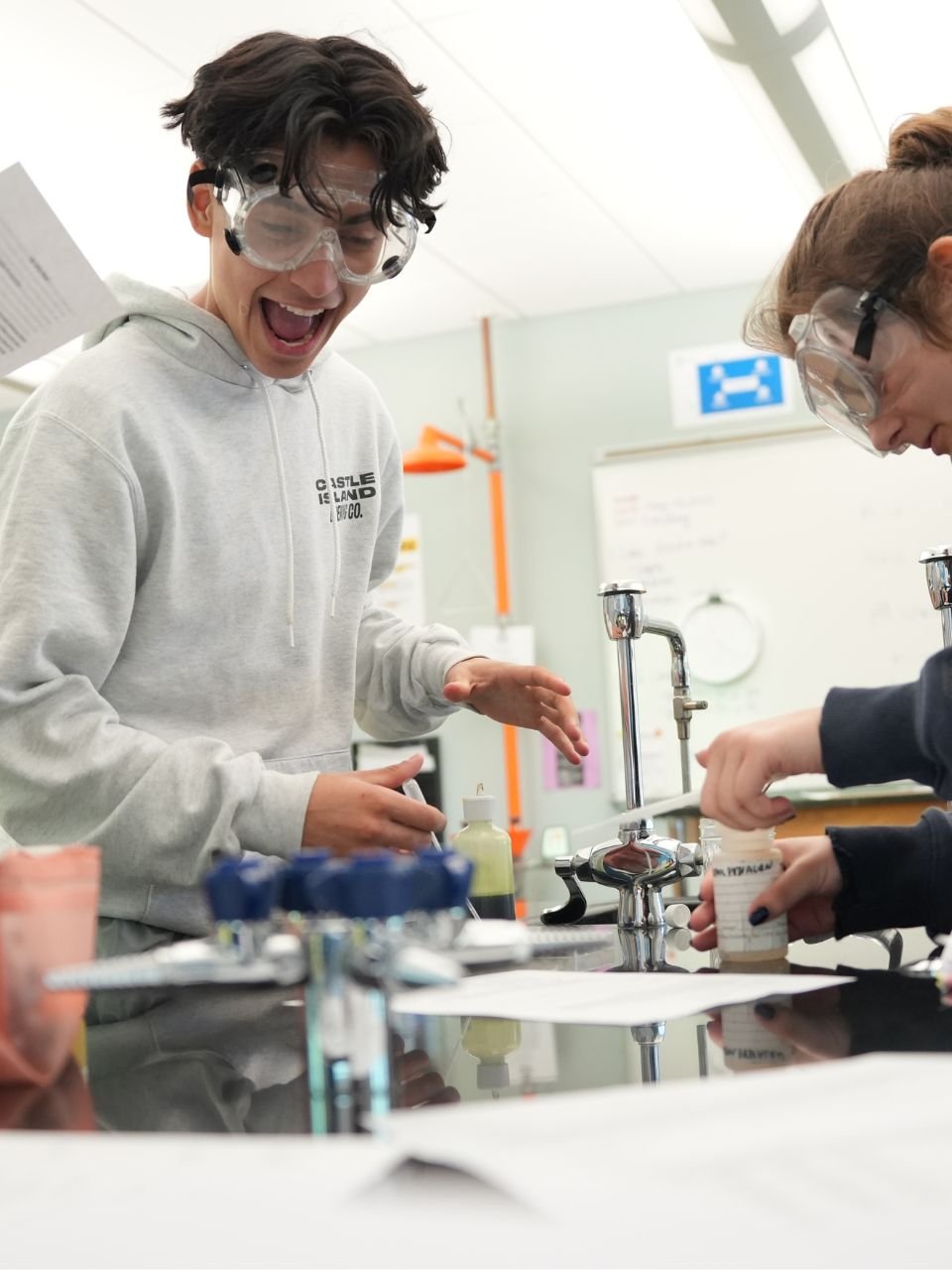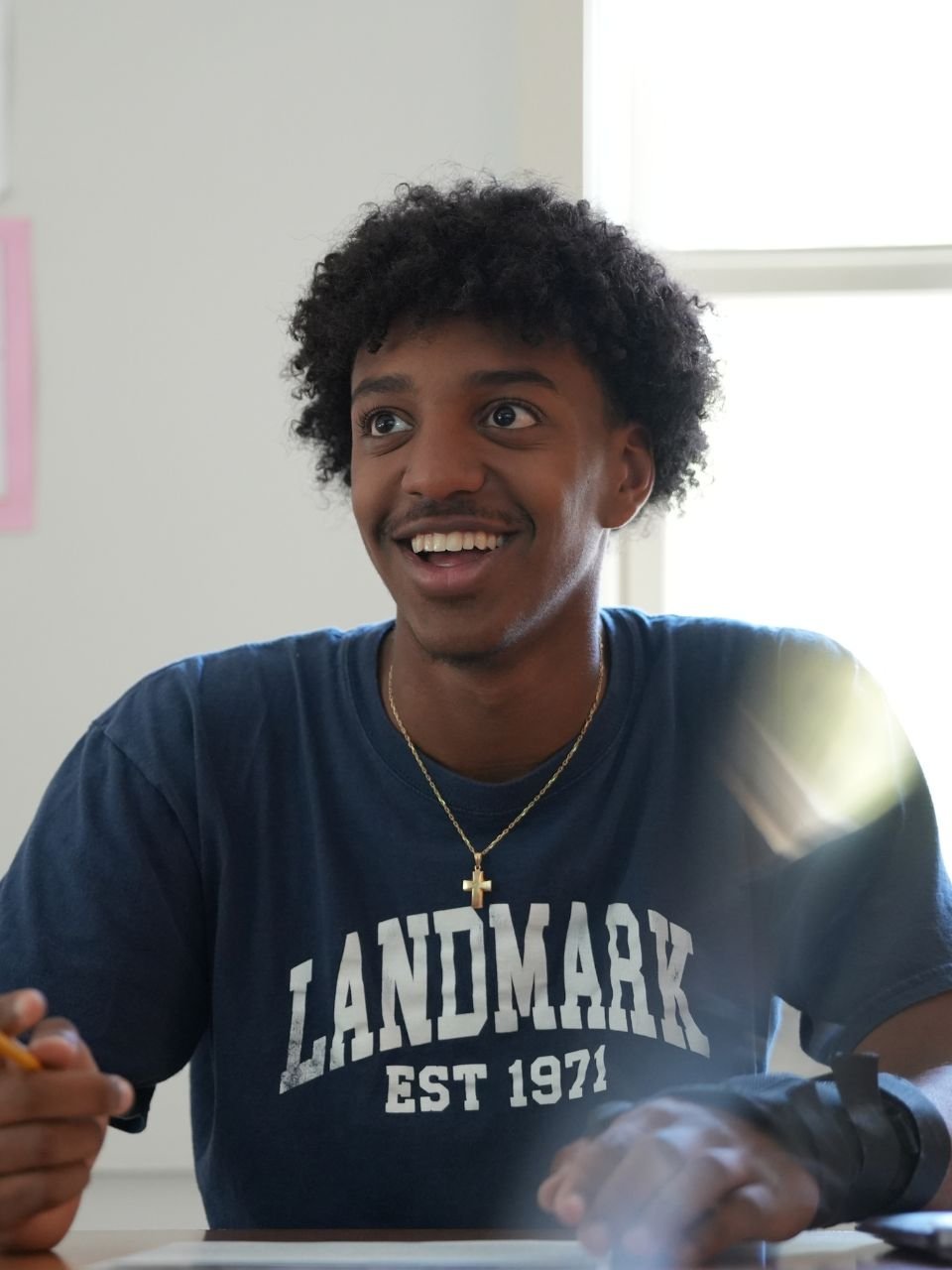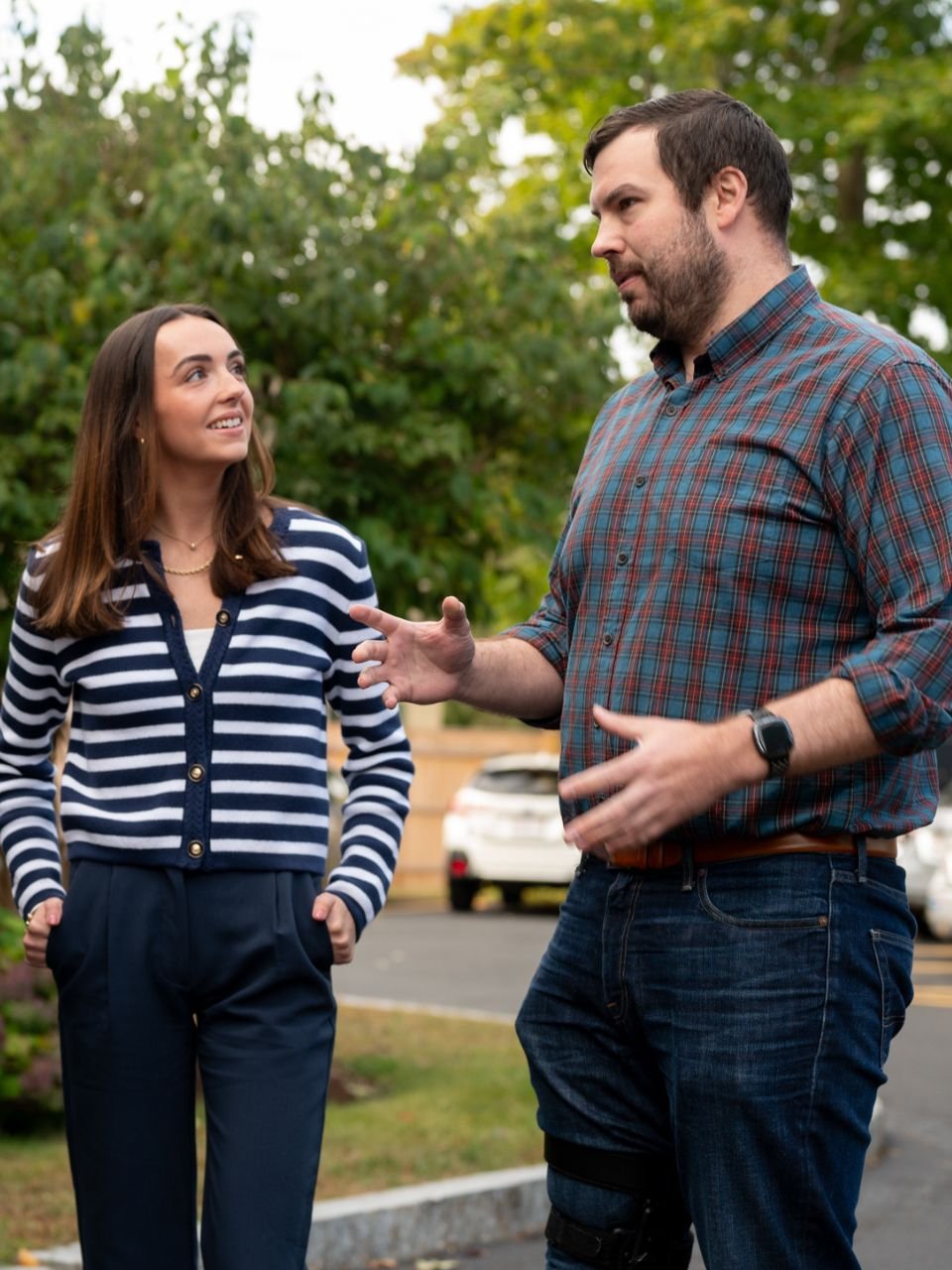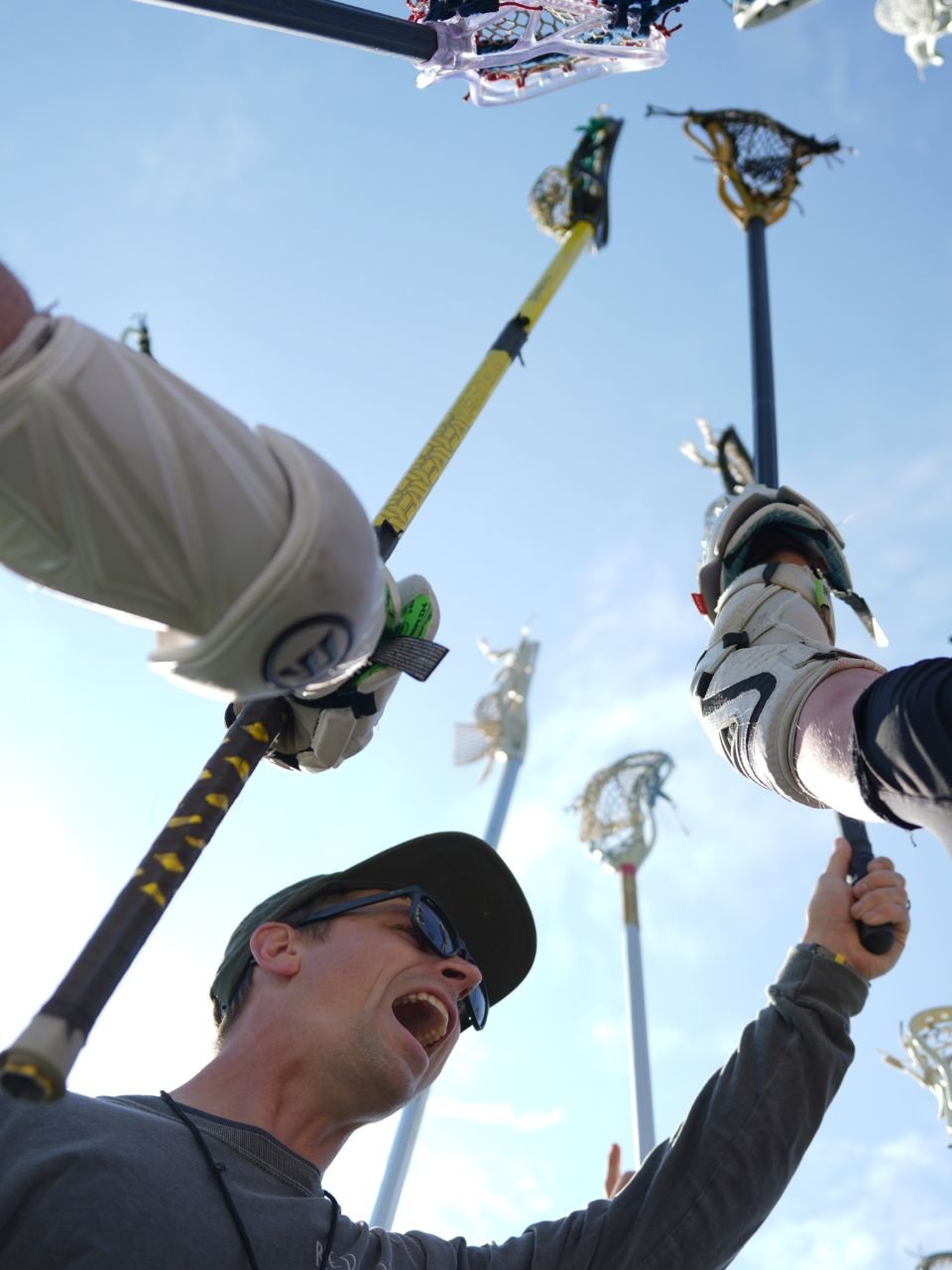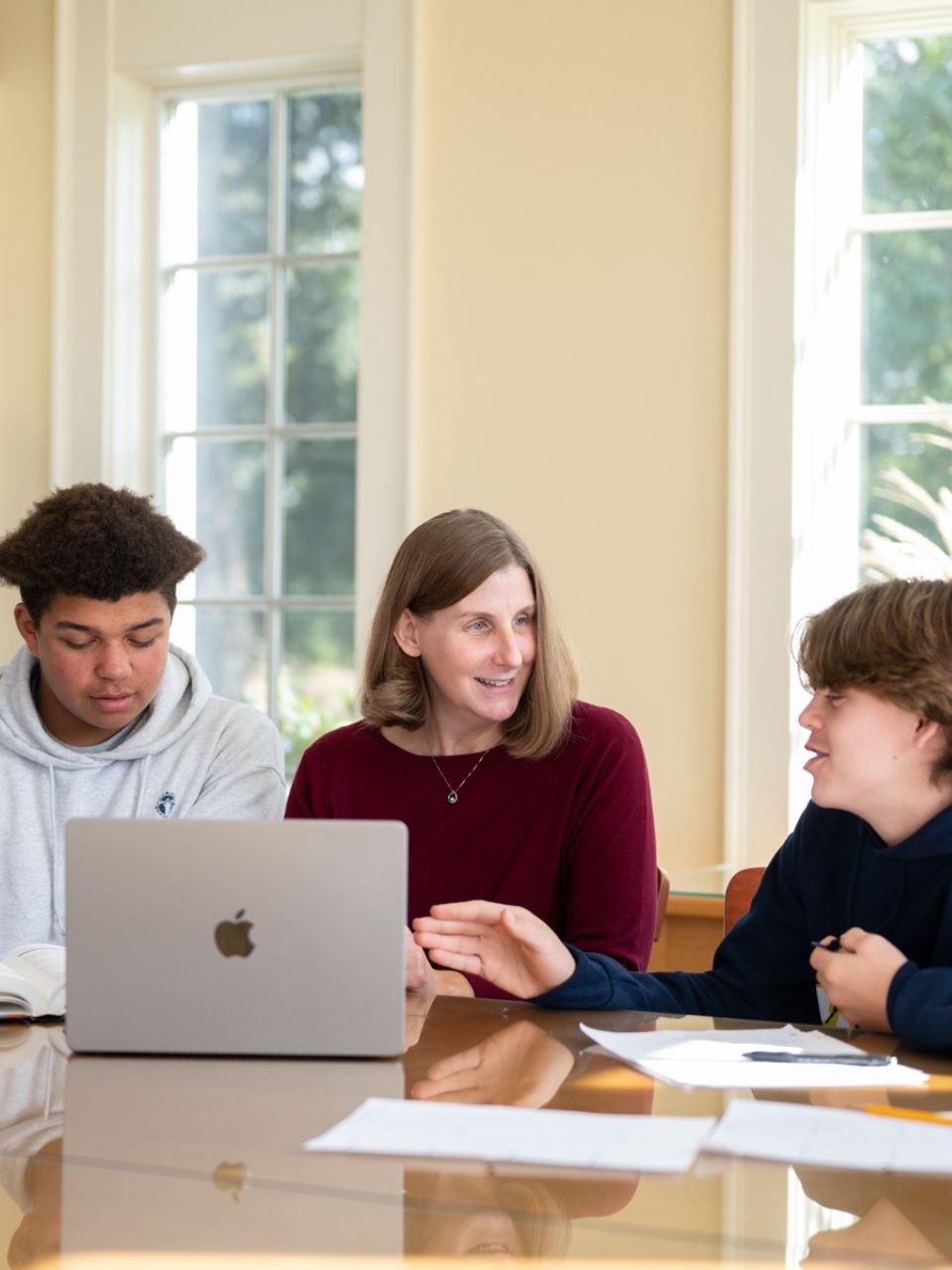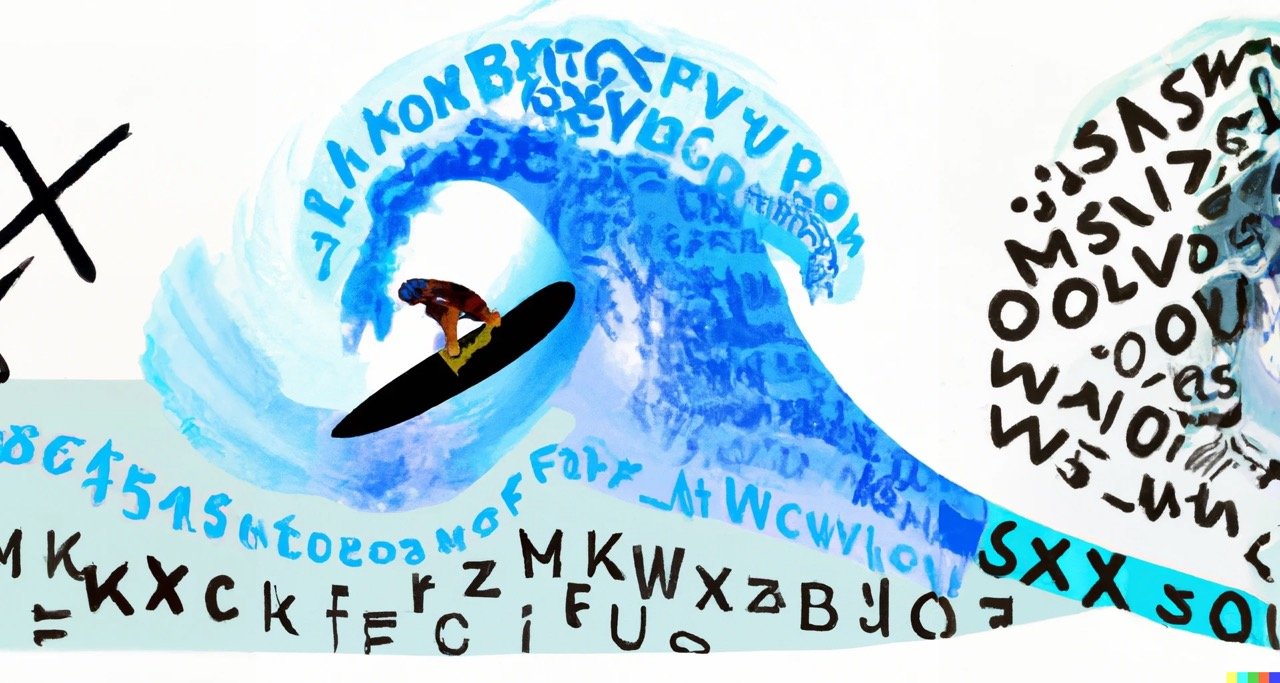- Our School
- Our Advantage
- Admission
- Elementary•Middle School
- High School
- Summer
- Giving
- Parent Resources
- For Educators
- Alumni
« Back
An AI Tsunami is Coming for Education
An AI Tsunami is Coming for Education & Dyslexia can Surf: PART 1
June 13th, 2023
An AI Tsunami is Coming for Education
& Dyslexia can Surf
Part 1
By Josh Clark
This article was written on April 23, 2023 and is part 1 in a series from Josh Clark on Generative AI as it intersects with education.
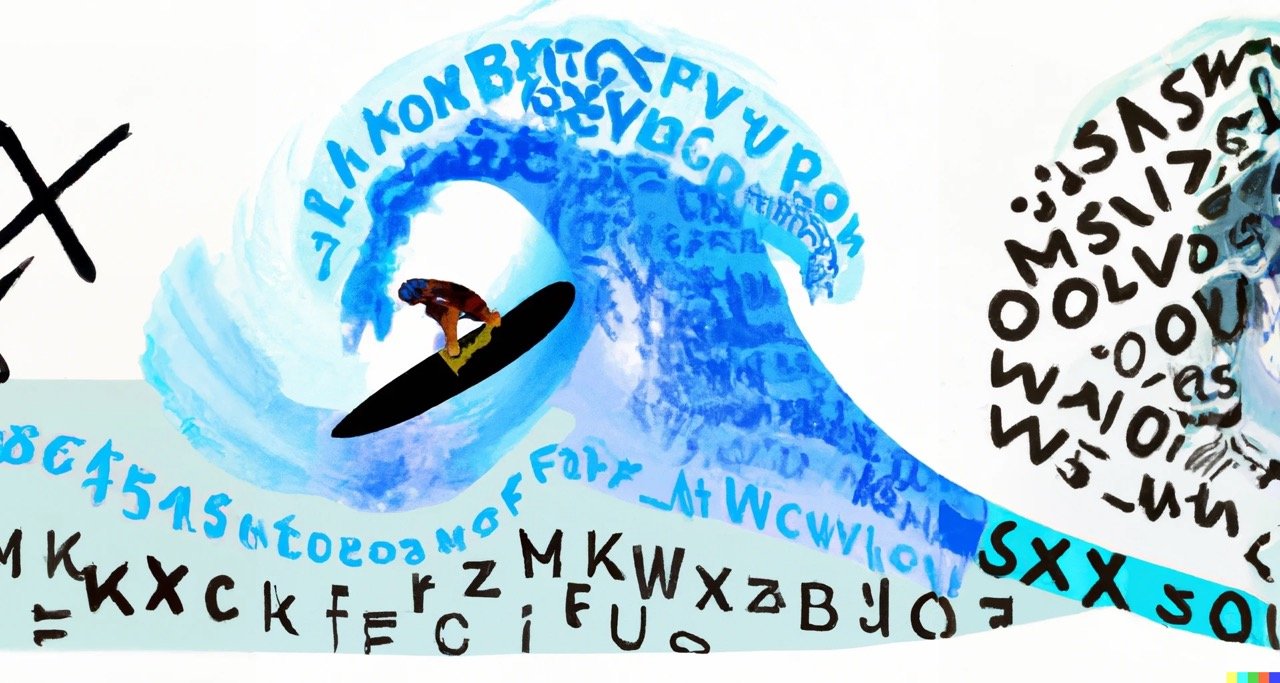
Image generated by DALL-E
In February of 2020, reports of Chinese schools employing unheard of mitigation strategies to combat a mysterious and growing virus caught my attention. I watched video clips of teachers clad in medical armor taking students’ temperatures before spraying the bottoms of their shoes with bleach. It did not take long for these defenses to fail, and seemingly overnight Chinese schools were closed and students and teachers exiled online.
Everything about it seemed impossible. I took comfort in my certainty that this could never happen in the United States. Yet I could not help but wonder: What if? What if this invisible menace eluded our defenses? What if the world as we knew it suddenly changed? Personal matters aside, how could we possibly teach dyslexic learners online? I became obsessed. I read every news story building an arsenal of information and ideas. I was a digital doomsdayer hoarding not toilet paper but Google Meet tutorials.
On February 26, 2020 I sent an email about the ‘coronavirus’ to a list-serv of approximately 200 administrators at schools for students with dyslexia, asking, “What if what happened in China happens to us?” I qualified the question by highlighting its absurdity, assuring everyone (and myself) that we would soon laugh about this, cozied up to the bar at the next conference. I felt like Chicken Little screaming that the sky was falling.
The first time I used OpenAI’s ChatbotGPT-4, I felt the sky starting to crumble again.

Image generated by DALL-E
The same cocktail of anxiety and adrenaline that sent me down online rabbit holes about air filtration and ‘synchronous online learning’ is again monopolizing my attention. Much like March of 2020, I am wondering how we can rapidly adapt to unprecedented and unpredictable change. There are many important differences between the impacts of Covid-19 on education and the potential of generative AI, though they may not be what you think. There is a chance they both could kill us and just like the early days of lockdown, there is a lot we do not know, even as it begins to transform our lives. Unlike our response to Covid, however, AI-inspired changes will not be temporary.
As leaders of schools for students with dyslexia, the implications of this technology on our students and our programs are vast. Reading and dyslexia researcher Dr. Mark Seidenberg urged us to act upon all we know about “Language at the Speed of Sight.” What will it mean for our students, our instruction and our institutions when language is at the speed of WiFi?
As I share some of my early thoughts and questions, two assumptions inform my thinking: 1.) the technological advancements and corresponding changes associated with AI are inevitable 2.) I am more excited than I am worried — I think.
What is Generative AI?
Generative AI is an emerging technology that uses complex, predictive algorithms called Large Language Models to generate new, realistic content including text, video and images. Put simply, it analyzes massive amounts of data from the Internet to create content, solve problems and answer questions in a way that feels ‘human’, and in some cases, exceeds our own capabilities. And it does so in seconds.
Presently, the best known example is ChatbotGPT. It is a free website (with a paid upgrade option) that can generate any form of text about anything in any language and at any level. While it is far from perfect, even if no improvements were made (and there will be), in its current form the technology has existential consequences for how we think about teaching, learning and work — not to mention philosophical and ethical questions about originality, creativity, etc.
Why does this Matter?
An understandable response to this new technology is a simple sigh, as we relegate it to the wasteland of past breakthroughs guaranteed to “revolutionize” teaching. Unlike your stupid SMART board, though, even in its earliest of iterations, this technology will impact all aspects of how we teach, work, learn and live.
It is already predicting complex protein structures, helping doctors become more efficient in diagnosing patients, and built a functioning website based on a picture of a description sketched on a napkin. Even more amazingly, it was not designed to do any of these tasks. It learned to do them. It is the technology’s ability to generalize its application that has many of its own developers describing its creation as a ‘summoning’ more than an invention. In many ways, even the engineers building it do not fully understand how it works or what it can do. All we know is that it is happening very quickly and is just beginning.
Microsoft recently shared its AI-powered Co-Pilot , and its underlying technology will likely change the way we do work, eliminating many repeatable and routine tasks. It is not hyperbolic to think that in the near future we will all have AI personal assistants managing our calendars, writing student reports, summarizing recordings of our classes, generating lesson plans and assessments and creating individualized content for students. Not to mention personalizing our nutrition goals and then generating corresponding recipes for tonight’s dinner based on pictures of our fridges and pantries.
AI will not just make us skinnier and more productive; there is a darker side as well. Microsoft’s Bing search engine is now powered by ChatbotGPT, and when you ask a question, it provides a narrative response as opposed to a list of websites. This is highly disruptive to search’s traditional revenue stream from advertisements. Keep in mind that those ads are strategically curated for you based on your search and browser histories. Those same histories also influence the kinds of stories you see on social media and the videos you watch on YouTube. Those manipulative algorithms might also be why your Uncle John transformed from your favorite relative into a fanatic wearing an aluminum foil hat to Thanksgiving dinner. This kind of technology will soon seem primitive if AI is used to manipulate our thinking.
Over the next decade, we are likely to experience industrial-revolution-size efficiency gains and potentially destabilizing online misinformation and manipulation. These forces will change the world we are preparing students to enter. We need to start thinking about this technology now because we are already behind.
Read all parts of this series An AI Tsunami is Coming for Education & Dyslexia can Surf:

About the Author
Josh Clark is the Head of Landmark School and Chair of the International Dyslexia Association. Before joining Landmark School, Josh had already begun to make a name for himself as a champion of struggling learners. He was the head of two other schools that empowered struggling dyslexic learners. He is also an expert contributor to the global nonprofit Made by Dyslexia and Microsoft Education. As a brilliant dyslexic himself, Josh is a life-long learner and problem-solver.
Join Josh for an EdChat
Virtual community discussions delving into the intersection of artificial intelligence, education, and learning disabilities.
Posted in the category Learning.








